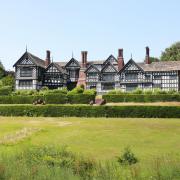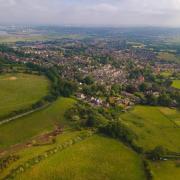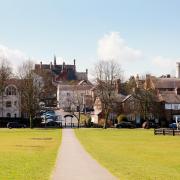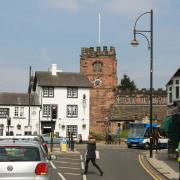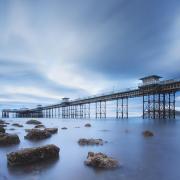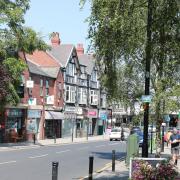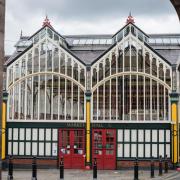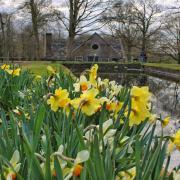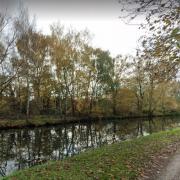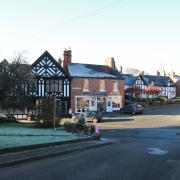Ray King meets historians, literature lovers and creative locals busy maintaining and enhancing the Knutsford’s appeal WORDS BY RAY KING PHOTOGRAPHY BY JOHN COCKS
The historic Cheshire town of Knutsford has never fought shy of its royal connections.
After all, the town was named after King Canute who, according to folklore, forded the River Lily here in the 11th Century. A thousand years later, Knutsford’s thriving main thoroughfares are King Street and Princess Street and when, in 2007, a new shopping development was opened connecting the two, it was named Regent Street. What else? And, naturally enough, the spring festival celebrated every year since 1887 is ‘Royal’ May Day.
Little wonder, then, that Knutsford has been for centuries an inspirational place, boasting more than 100 listed buildings – some grand, some decidedly bizarre - and an enviable literary heritage. The 19th Century novelist Elizabeth Gaskell, who immortalised Knutsford in many of her books, particularly Cranford, was brought up in the town, married here and is buried in the graveyard of the Brook Street Unitarian Chapel.
It was Mrs Gaskell’s legacy that inspired Knutsford’s ‘Millennium Project’ a festival that was, in 2000, supposed to be a one-off event. It was so successful however, that a team of eight committee members are currently busy organising the 14th Knutsford Literature Festival that will, in October, draw leading figures from today’s literary world – and thousands of visitors - to the town.
Last year luminaries spanning a wide variety of genres including Michael Portillo, Prue Leith, Kate Summerscale, Helen Rappaport and Hannah Rothschild made appearances and Mrs Julia Jary, festival committee member for 13 years, promises another stellar cast.
‘We started planning in March for this year’s event and we try to be up to speed with what’s being published now – fresh off the press – and keep an eye on people who will have work coming out in the autumn in order to keep the festival as topical as we can. The aim is to get the programme together this monthJuly and make it available in to the public in August.
‘This year’s festival will run between the 5th and 20th October with the Methodist Church and Leicester Warren Hall among the main venues. We like to include in the programme several performance events not directly connected with book selling and evening of poetry reading. Last year’s was at The Angel. It was, once again, well-attended and it never ceases to surprise with its excellent poetry-readings from poets as diverse as Omar Khayyam to Sylvia Plath and the number of poets who come - sometimes from long distances -to read their own impressive and wide-ranging poems.’
As well as inspiring books, Knutsford has been celebrated many times on screen. And here’s an irony. The town was judged unsuitable for the filming of the acclaimed BBC television production of Mrs Gaskell’s Cranford – none of the exterior scenes were shot here – but it doubled as Shanghai in the opening sequences of Steven Spielberg’s epic Empire of the Sun. In 1987 the film crews descended on Legh Road, designed by Richard Harding Watt whose Italianate buildings give Knutsford much of its unique character (but probably disqualified the town from doubling as Cranford), to shoot scenes of J G Ballard’s best seller.
Much truer to real life, scenes from George C. Scott’s Oscar-winning portrayal of General George ‘Blood and Guts’ Patton in the film Patton were shot outside Knutsford’s old town hall – in the very spot where in 1944 the American general made a controversial speech, ‘The Knutsford Incident’, that almost cost him his career months before his dramatic post D-Day victories in France.
To accompany this movie heritage, Knutsford now has a ‘new’ cinema. The much revamped picture house in Toft Road relaunched as the Curzon after a £170,000 transformation earlier this year. Curzon Cinemas signed a 25-year lease with Cheshire East Council to manage the 180-seat cinema in November – the company’s first outside of London.
The arthouse and independent film specialist spent around £110,000 of its investment on a smart contemporary cafe bar and an area to view trailers of forthcoming films in the foyer and £60,000 on a state-of-the-art digital projector. The design team, ABDA Creative Design worked on Manchester’s National Football Museum.
Knutsford’s cinema opened in 1935 as the Marcliff and was reopened as the Studio Cinema and Civic Centre in 1991, run by the local council. Current manager Maggie Ashworth who has been in charge since 2000 is enthusiastic about the transformation.
‘It’s made a huge difference to the place and people really appreciate it,’ she said. ‘Audiences are on the up.’ Not surprisingly perhaps, the local taste is for period drama...and, said Maggie, the opening of Leonardo di Caprio’s The Great Gatsby was keenly anticipated.




